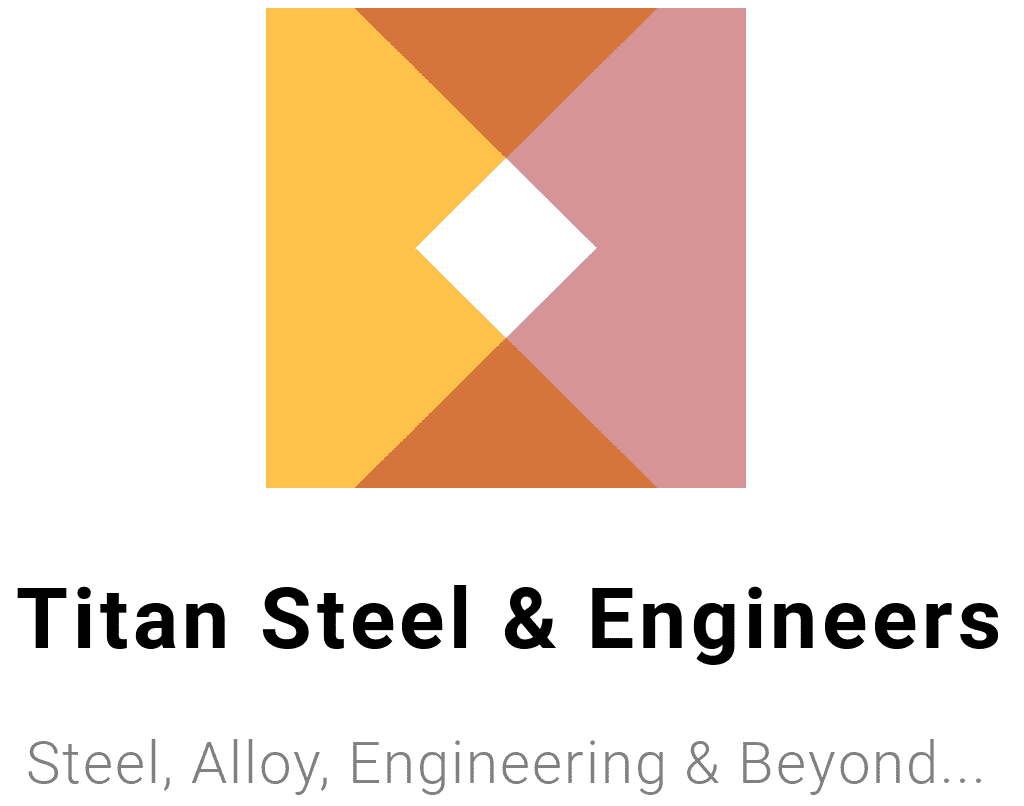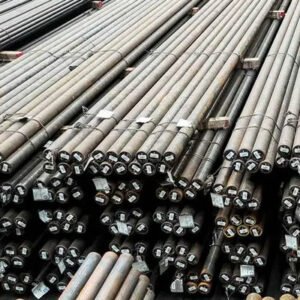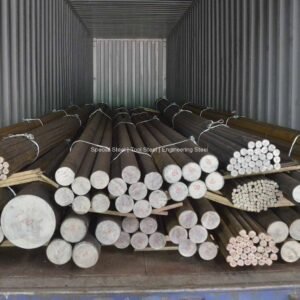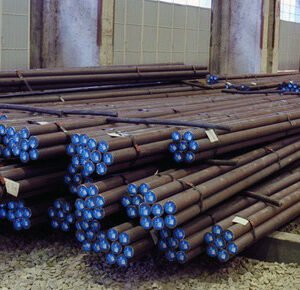Description
AISI 1050 Steel: Explanation, Applications, and Grades
Introduction to AISI 1050 Steel:
AISI 1050 is a high-carbon steel known for its high strength, hardness, and wear resistance. It contains approximately 0.48% to 0.55% carbon and about 0.60% to 0.90% manganese, making it more robust and harder than lower-carbon steels in the 10xx series. Due to its high carbon content, AISI 1050 offers excellent hardness and moderate machinability. It can be hardened and tempered for applications where toughness and high strength are essential, although it has somewhat limited weldability due to its carbon content.
Properties of AISI 1050 Steel:
AISI 1050 is often chosen for its superior hardness, durability, and ability to withstand wear under dynamic stress. This steel is responsive to both heat treatment and surface hardening, allowing it to achieve increased hardness and strength. However, with higher carbon levels, it requires preheating before welding to avoid cracking. AISI 1050 provides a balanced trade-off between toughness and hardness, making it versatile for components subjected to continuous wear and mechanical loads.
Applications of AISI 1050 Steel
- Automotive and Mechanical Components:
AISI 1050 is frequently used for automotive parts like gears, axles, and shafts. Its hardness and durability make it ideal for high-stress automotive components that must endure friction and repetitive mechanical loads. - Industrial Machinery and Equipment:
Components such as spindles, crankshafts, and pulleys are often made from AISI 1050 due to its ability to withstand repeated impacts and wear. The high hardness and moderate toughness allow it to perform reliably under continuous dynamic conditions. - Agricultural Equipment:
In the agriculture industry, AISI 1050 is used to make high-wear components like tiller blades, disc harrows, and plow parts. These parts benefit from the high carbon steel’s wear resistance, extending their lifespan even in abrasive environments. - Hand Tools and Cutting Tools:
Hand tools like hammers, chisels, and cutting tools are often manufactured with AISI 1050. The steel’s hardness and strength make it suitable for parts that undergo repeated impact and need high resistance to edge wear. - Structural and Construction Uses:
AISI 1050 can be used in structural applications requiring strong support with moderate flexibility. It is often found in frameworks, fasteners, and connecting rods where durability is necessary. - Forged Components:
Common in the forging industry, AISI 1050 is used to make items like forged rings, bars, and automotive components that benefit from the steel’s strength and adaptability. These parts can be heat-treated to meet specific mechanical requirements.
Grades of AISI 1050 Steel and Their Properties
| Grade | Material Type | Common Applications | Properties |
|---|---|---|---|
| AISI 1050 | High Carbon Steel | Automotive parts, hand tools | High hardness, wear resistance, heat-treatable |
| SAE 1050 | High Carbon Steel (ASTM Spec) | Spindles, shafts, gears | Improved durability, moderate machinability |
| C50 | High Carbon Steel (ISO) | Tooling, agricultural equipment | Enhanced wear resistance, hardenable |
| EN9 | Equivalent Engineering Steel | Shafts, axles, construction frameworks | High strength, good impact resistance |
| S50C | Japanese Standard Carbon Steel | Mechanical parts, industrial tools | High strength, responsive to hardening treatments |
| DIN 1.1210 | European Standard High Carbon Steel | Forged parts, construction components | High hardness, durable under repeated stress |
| CK50 | High Carbon Engineering Steel | Machine components, tool manufacturing | High wear resistance, moderate machinability |
| UNS G10500 | High Carbon Steel (UNS) | Forgings, high-stress applications | Suitable for heat treatment, high tensile strength |
Key Benefits of AISI 1050 Steel
- High Hardness and Strength: With a higher carbon content, AISI 1050 provides increased hardness and mechanical strength, making it ideal for parts requiring high wear resistance and durability.
- Heat Treatment Compatibility: AISI 1050 can be heat-treated to enhance surface hardness and achieve desired strength levels, allowing for customized mechanical properties based on application needs.
- Wear Resistance: Its carbon and manganese composition improves wear resistance, making it suitable for components that endure friction and repeated loading.
- Versatile Applications: AISI 1050’s properties make it suitable across a variety of industries, from automotive to agricultural, where its strength and toughness support long-term functionality.






